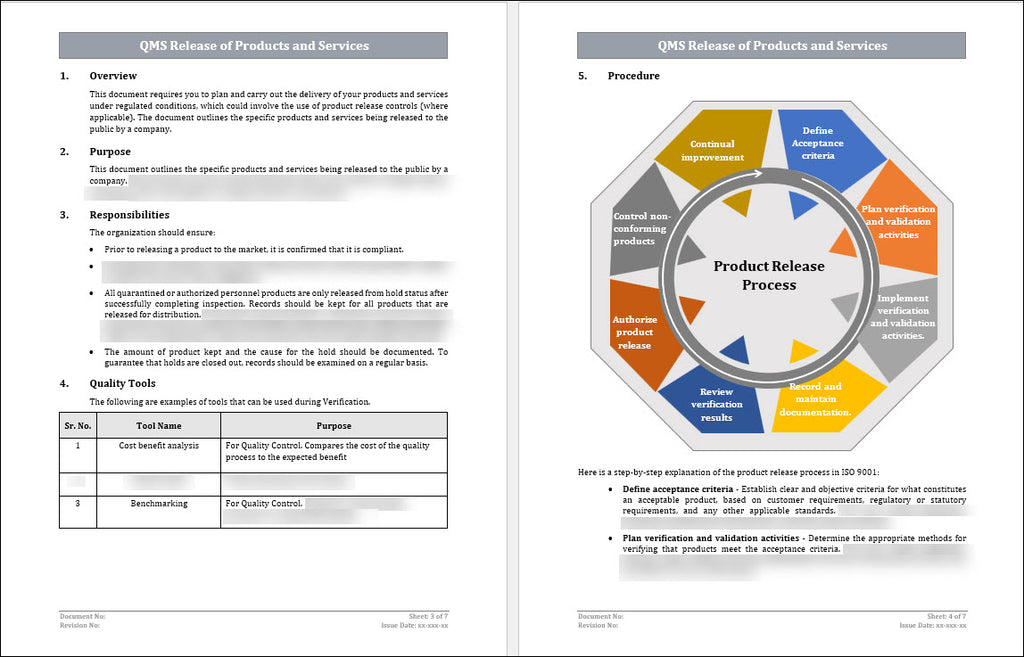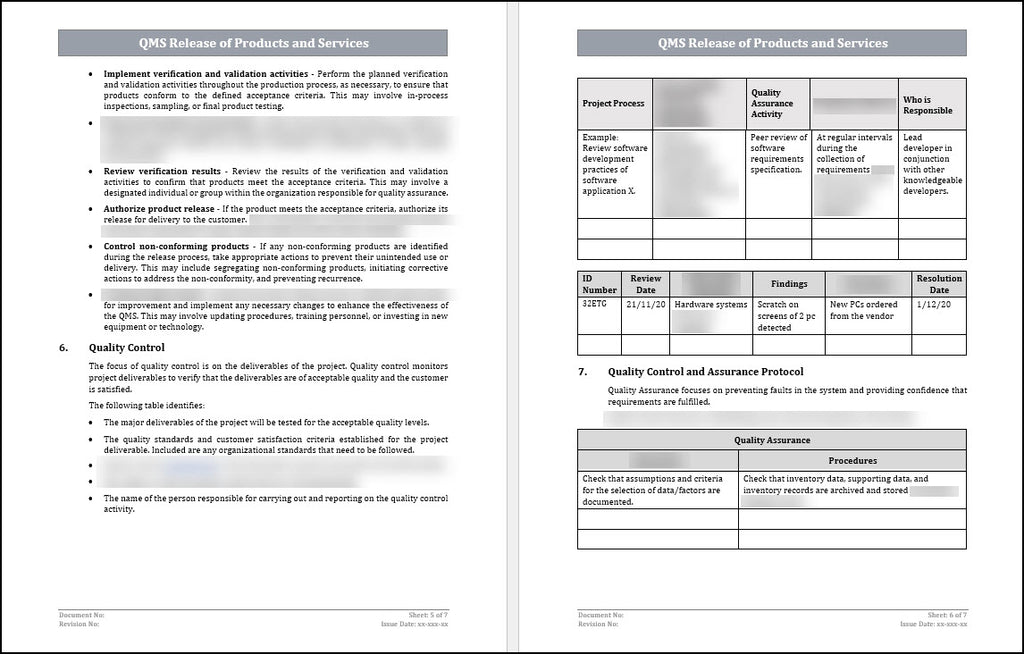ISO 9001 Release of Products and Services Template
The ISO 9001 Release of Products and Services Template is designed to ensure that your products and services meet all specified requirements before delivery. This template provides a structured approach to verifying quality, compliance, and customer expectations, helping organizations streamline their release processes.

Understanding the Importance of ISO 9001
Implementing ISO 9001 is crucial for organizations that value quality and customer satisfaction. It enhances the organization's credibility and showcases a commitment to continually improving processes to meet customer expectations. ISO 9001 provides a framework that helps organizations establish robust quality management systems, ensuring consistent delivery of conforming products and services.
By adhering to ISO 9001 standards, organizations can gain a competitive advantage in the market. Customers are more likely to trust businesses with a certified quality management system, knowing that their needs will be met consistently and reliably. ISO 9001 also enables organizations to identify and address areas for improvement, ultimately leading to increased efficiency and profitability. Moreover, ISO 9001 certification is often required for businesses entering specific industries or international markets. It shows a company's commitment to quality and compliance with industry standards.
The Key Components of Release of Products and Services
Release of products and services is a critical aspect of any business. It involves ensuring that the products and services offered are of high quality and meet the customers' expectations. To achieve this, several vital components need to be considered. In this blog, we will discuss these components in detail.
1. Responsibilities: It is imperative to clearly define the responsibilities of each team member involved in the release process. This includes identifying who is responsible for product testing, quality control, and ensuring adherence to quality standards. By clearly defining these responsibilities, there will be no ambiguity, and every team member will know what is expected of them.
2. Quality Tools: Several quality tools can be used to enhance the release process. These tools ensure that the products and services meet the desired quality standards. Some commonly used tools for example:
- Statistical Process Control (SPC): SPC monitors and controls a process by analyzing statistical data. It helps in identifying and eliminating variations in the production process.
- Six Sigma: Six Sigma is a methodology that aims to improve the quality of products and services by reducing defects and eliminating waste.
- Failure Mode and Effects Analysis (FMEA): FMEA is a systematic approach to identify potential failures in a product or service, assess their impact, and devise preventive measures.
3. Procedure: A well-defined procedure is crucial for a smooth release process. The procedure should clearly outline the steps that must be followed, including product testing, quality control checks, and any necessary changes or modifications. This ensures that the release process is consistent and standardized.
4. Quality Control: Quality control is vital in releasing products and services. It involves monitoring and inspecting products and services to meet the desired quality standards. Some key aspects of quality control include:
- Project Process: Ensuring all processes and procedures are followed correctly throughout the project lifecycle.
- Process Quality Standards: Defining and adhering to specific quality standards for each process involved in the release.
- Quality Assurance Activity: Conducting regular quality assurance activities to identify any potential issues or areas of improvement.
- Frequency and Responsibility: Clearly define the frequency and individuals responsible for quality control checks and assurance activities.
5. Quality Control and Assurance Protocol: Establishing a quality control and assurance protocol helps maintain consistency and ensure quality across all products and services. This may include defining specific QC activities, procedures, and guidelines for implementing quality control measures.
6. Record Management: Effective record management is crucial in the release process. It involves maintaining proper product testing documentation, quality control checks, and necessary modifications or changes. This allows for easy retrieval and reference, enabling the team to track the progress and ensure adherence to quality standards.

The Benefits of Adhering to ISO 9001 Standards In Product and Service Releases
Regarding releasing products and services, adhering to ISO 9001 standards has numerous advantages for organizations. By following the guidelines set forth by ISO 9001, businesses can ensure that their products and services consistently meet customer requirements and expectations.
One of the key benefits of adhering to ISO 9001 in product and service releases is the reduction of errors and defects. Organizations can identify and address potential issues by implementing a rigorous quality control system before releasing their products or services to the market. This prevents customer dissatisfaction and saves valuable time and resources that would have been invested in reworking or replacing faulty products.
Furthermore, ISO 9001 standards emphasize the importance of feedback and continuous improvement. By implementing feedback systems and conducting regular audits, organizations can collect valuable data that can be used to analyze and improve their product and service releases. This constant evaluation and enhancement of processes leads to increased efficiency, higher customer satisfaction, and improved profitability.
In addition, adhering to ISO 9001 standards in product and service releases also enhances customer trust and loyalty. When customers see the ISO 9001 certification logo, they can be confident that the organization has implemented a robust quality management system. This assurance builds trust and encourages repeat business.
Conclusion
In conclusion, adhering to ISO 9001 standards in releasing products and services brings numerous benefits to organizations. Organizations can reduce errors and defects by implementing a rigorous quality control system, saving valuable time and resources. Continuous improvement and feedback mechanisms enable organizations to analyze and enhance their processes, increasing efficiency and customer satisfaction. Moreover, adhering to ISO 9001 standards builds customer trust and loyalty, as the certification logo assures them of a robust quality management system.

